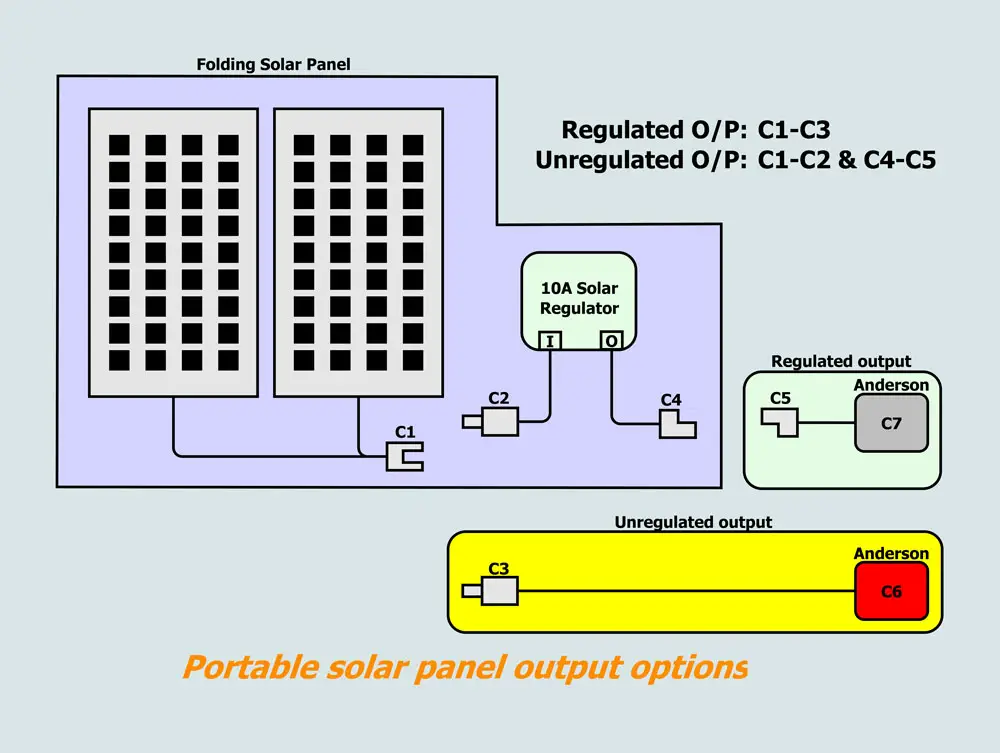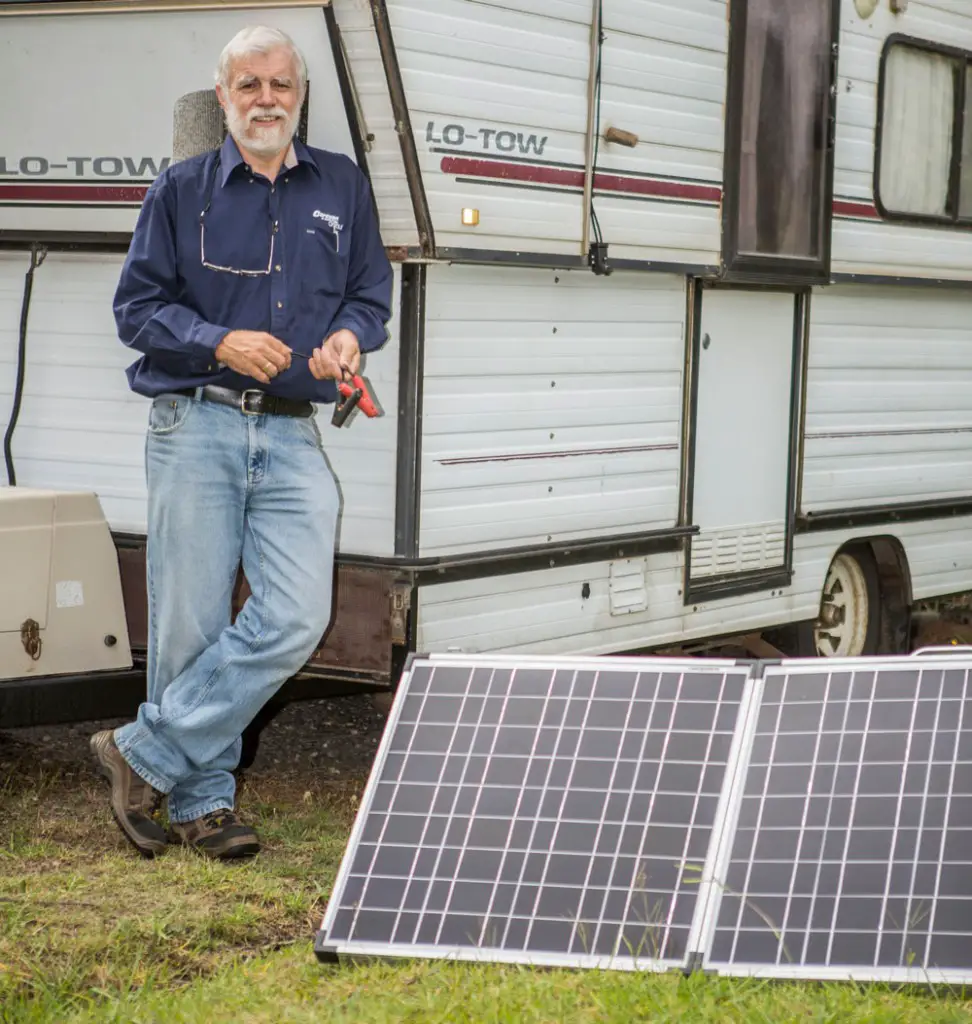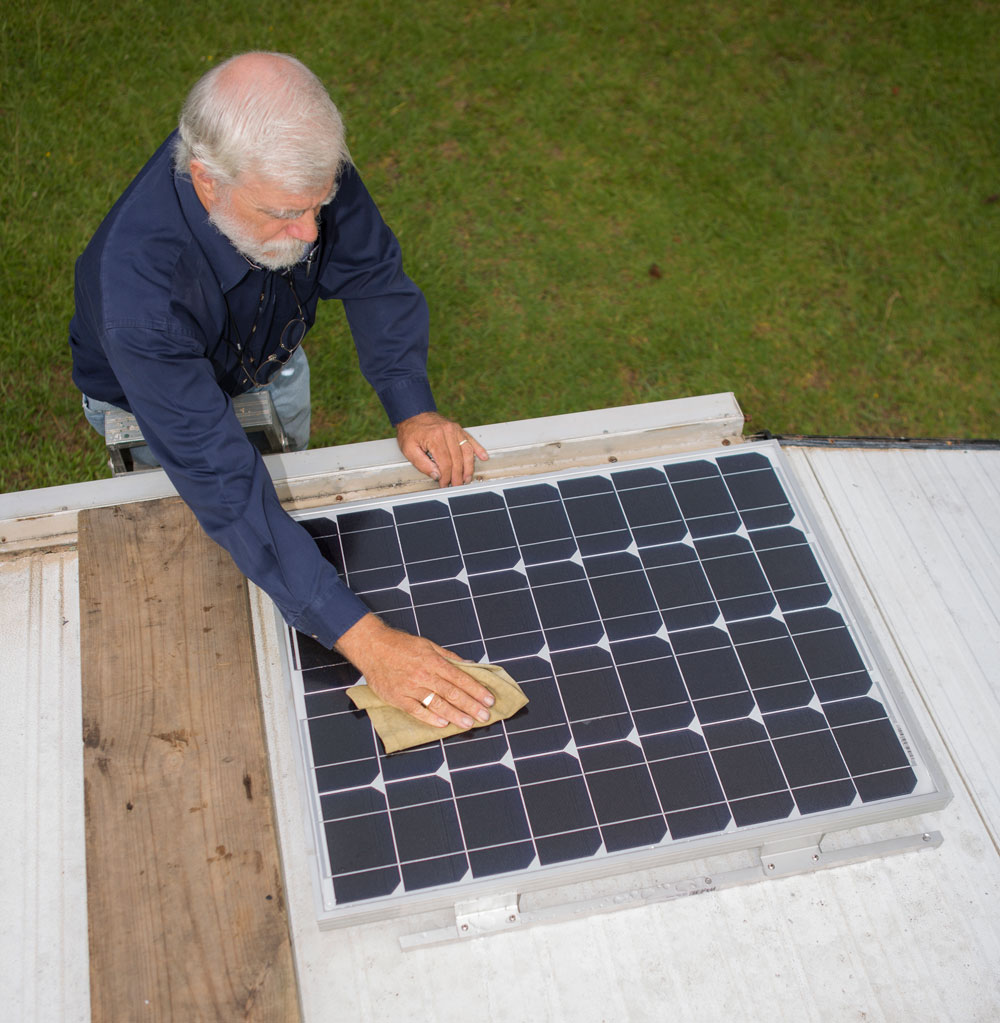WORDS BY JOSEPH VAN WOERKOM
PHOTOGRAPHY BY JOSEPH VAN WOERKOM AND CARAVAN & MOTORHOME
To get sufficient electrical power when free camping for an extended period of time you need to be able to generate your own as you won’t find any power points on gum trees! There’s two mains ways to go about this; either use a portable motor generator or set up a solar power system.
We’ll leave discussion on motorised generators for another day and instead have a look at what’s involved in setting up a good solar power system.
BATTERY CAPACITY
Before spending any money on a solar system it’s important to know what battery capacity you need. To do this, you first need to determine how much energy your RV will typically use in a 24 hour period, in terms of battery amp-hours (see ‘Technical Terms’).
This is reasonably easy for most 12V appliances since they are often rated in terms of current draw. For cyclic loads like fridges you use the average. For example, if the fridge is rated at 3A but it is only running on average for 20 minutes each hour, the amp-hour draw during 24 hours is 3A/3 x 24h = 24Ah.
Energy consumption of AC appliances needs to be converted from Watts to amp-hours at 12V. To do this, simply divide the Watts by 10. By dividing by 10, rather than 12, we take into account losses in the inverter.
The battery system’s capacity must be greater than the sum of the typical 24 hour amp-hour energy usage for all your appliances. In fact, to ensure good a lifetime from even quality deep cycle batteries, it’s recommended that they be discharged by less than 50% of their capacity on a regular basis.
This means that the amp-hour capacity of the batteries must be at least double the amount of amp-hours that you would use in a day. If you want to free camp for more than a day without recharging batteries then multiply this capacity by the number of days.
Example: You have determined that you consume an average of 20Ah per day and you want to be able to free camp without recharging for up to 3 days. Required battery capacity is 20Ah x 2 x 3 = 120Ah.
SOLAR PANEL OUTPUT
For unlimited free camping without resorting to generators, the generating capacity of the solar panels needs to be greater than your typical daily energy consumption.
To determine the required solar panel capacity you need to take several factors into account; panel position, amount of sunlight, temperature and type of regulator used (see next section).
RV solar panels can either be fixed into position or portable so that they can be moved around to follow the sun. For maximum average effectiveness in the southern hemisphere, fixed panels should face due north and then angled up from the horizontal according to latitude (20° in Darwin, 40° in Hobart). As this is impractical for RVs, fixed panels are usually mounted flat on the roof which reduces the amount of energy they can produce according to latitude (6% in Darwin, 24% in Hobart).
Also remember that solar panels only produce their rated maximum power when relatively cool (less than 25°C). Output falls by roughly 5% for each 10°C temperature rise.
Even with optimum alignment, the amount of energy generated each day depends upon the amount of sun that reaches them. To make calculations easy the solar industry uses ‘peak sunshine hours’ (see ‘Technical Terms’) which vary from 7.2h in August in Darwin to a measly 2.7h in Hobart in June.
Example #1: The average energy which can be expected to be produced by 100W panel mounted horizontally Hobart in June with an ambient temperature of 15°C is 100W x 76% x 2.7h = 205Wh/day.
Example #2: The average energy which can be expected to be produced by 100W panel orientated optimally in Darwin in January with an ambient temperature of 35°C is 100W x 95% x 7.2h = 602Wh/day.
SOLAR REGULATORS
It may seem surprising that solar panels don’t produce power at their nominal voltage. For example, in bright sun without any electrical load connected, the terminal voltage is typically 21V for a 12V panel which falls to zero under short circuit conditions.
To provide any useful power solar panels need to operate under a load that forces them near the Maximum Power Point (see ‘Technical Terms’). For 12V panels under full sunlight this is when the output voltage is around 18V. Note that this voltage is way too high for the panel to be connected directly to a battery which is where solar regulators come into play.
What the solar regulator does is to reduce this high voltage to a value that won’t hurt the battery. The simplest are shunt regulators which place a variable resistance across the panel to reduce the terminal voltage to a safe value. While simple, they aren’t very efficient because of the heat lost in the shunt resistor.
A more efficient regulator is one that uses Pulse Width Modulation (see ‘Technical Terms’) but the best regulators are Maximum Power Point Trackers (MPPT). By tracking the panels’ MPP they can extract every ounce of power from them, an important consideration in hot or cloudy weather.
Solar regulators are rated according to their maximum output current which should be higher than the total amount of amps that can be delivered by the solar panels.
Unfortunately, it can be confusing working out the maximum current solar panels produce as they have a number of current ratings. The short circuit current is the highest rating but the panels produce no power when short circuited. Instead, use the ‘Current at Maximum Power Point’ current rating.
AN EXAMPLE INSTALLATION
I recently upgraded the 12V battery system in my caravan in readiness for some long term free camping. All I needed to complete the system was some solar panels.
It just so happens that my poor van has to live outside when parked at home. However, it does face due north and its roof receives full sun for most of the day so a solar panel mounted here would work well to keep the van’s battery charged while not in use.
Only a small panel is needed for this purpose so I mounted a 100W unit on the roof, supported by aluminium channels to spread the load and to allow sufficient air space underneath for cooling. After much deliberation I decided not to attempt to run the solar panel cabling through the roof and walls as I know what a nightmare this can be due to the lack of any cavities through which to route the cables.
Instead the cables from the panel go over the side of the van then strapped to the sail track that holds the front annex wall. The cables terminate in a covered red Anderson plug and an Anderson plug extension cable connects the panel to the solar input of the previously installed D250S dual charger.
When camping I intend to park the van in the shade and use the portable 160W folding panels instead. To get the maximum output I elected to bypass the attached solar regulator and connect the unregulated panel output to the solar input of the previously installed D250S dual charger.
I can still use the folding panels without the caravan by reconnecting the unregulated panel output to its own regulator input and then using the supplied output lead. For versatility, I modified this lead by chopping of the alligator clamps and terminated it with a regular grey Anderson plug. This way I can plug the lead into the tug’s Anderson plug to recharge its battery or use an Anderson plug to alligator clamp adaptor to connect directly to a battery.
COLOURED ANDERSON PLUGS
Anderson plugs come in three different colours; grey (standard), red and blue. The different colours can be used for different applications because different colours will not mate with each other. I chose to use red for the unregulated solar panel output to prevent this from being connected directly to a battery via a standard grey plug.
TECHNICAL TERMS
| Term | Definition |
| Amp-hour (Ah) | An electrical current equivalent to 1A over a period of 1 hour. |
| Maximum Power Point (MPP) | A point on a solar panel I-V curve where the product of the output current and the terminal voltage is at its maximum. Varies with both temperature and the amount of incident light. |
| MPP Tracking (MPPT) regulator | A regulator that constantly varies the load on a solar panel to force it to operate at its MPP. |
| Peak sunshine hours | The equivalent number of hours per day when solar irradiation averages 1000W/m2. |
| Pulse Width Modulation (PWM) | A technique whereby output voltage is varied by rapidly switching the source power on and off. The effective voltage is determined by the ratio of the ‘on’ time compared to the ‘off’ time. |
| Watt | A unit of electrical energy equivalent to 1A at 1V. |
| Watt-hour (Wh) | An amount of electrical energy equivalent to 1W over a period of 1 hour . |







